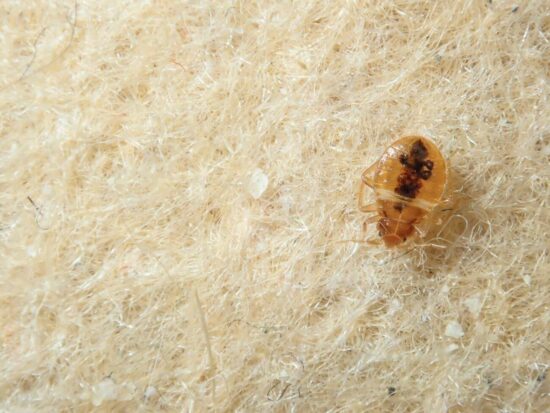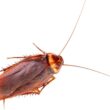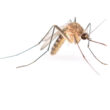Nobody wants to deal with bed bugs, but these tiny pests are becoming more common every year. If you’ve found them in your home, you’re probably wondering about your options. While many people think they need expensive professional treatments, killing bed bugs with heat yourself can be a smart and effective solution.
Heat treatment works because bed bugs simply can’t survive high temperatures. Unlike chemical sprays that bugs are becoming resistant to, heat gets into every crack and crevice where these pests hide. Plus, heat kills all stages of bed bugs at once, including the tough-to-kill eggs.
This guide will walk you through everything you need to know about using heat to fight bed bugs on your own. You’ll learn simple methods using equipment you might already have, as well as more advanced techniques for serious infestations.
Why Heat Works Better Than Other Methods
Understanding why heat is so effective helps you use it properly and gives you confidence in this approach.
Bed bugs are getting harder to kill with traditional pesticides. Many populations have developed resistance to common chemicals, which means those expensive spray treatments might not work. Heat, on the other hand, is something bed bugs can’t adapt to.
When bed bugs get too hot, their bodies break down at a cellular level. Adults start dying at 113°F, while their eggs need to reach 118°F to 122°F. The best part? Heat reaches places that sprays can’t, like deep inside mattress seams and tiny wall cracks.
Heat treatment also works fast. While chemical treatments can take weeks to show results, heat kills bed bugs in minutes once the right temperature is reached. There are no toxic fumes to worry about, and you can use the treated areas right after they cool down.
Simple DIY Heat Methods Anyone Can Try
These basic techniques require equipment most people already have or can easily get from any store.
Using Your Clothes Dryer
Your regular household dryer is probably the easiest tool for starting your heat treatment campaign.
The easiest way to start killing bed bugs with heat yourself is with your regular clothes dryer. Most home dryers can reach temperatures hot enough to kill bed bugs and their eggs.
Here’s how to do it right:
Step 1: Bag Everything Carefully: Put suspected items in plastic bags before moving them. This prevents bed bugs from spreading to other rooms. Seal the bags tightly and carry them straight to your laundry room.
Step 2: Wash First (If Possible): If items can be washed, use the hottest water setting your machine allows. Water at 140°F will kill bed bugs during a 30-minute wash cycle. This step isn’t required, but it helps ensure better results.
Step 3: Dry on High Heat: Put items in the dryer on the highest heat setting they can handle. Run the dryer for at least 30 minutes, even if the clothes are already dry. The key is maintaining that killing temperature long enough to reach bugs hiding deep in fabric folds.
Step 4: Store Safely: Once dried, immediately put clean items in fresh plastic bags. Keep them sealed until you’ve finished treating the infested areas of your home.
This method works great for clothing, bedding, curtains, shoes, and even stuffed animals. Just make sure items can handle high heat without getting damaged.
Steam Cleaning for Furniture and Mattresses
When you need to treat items that can’t go in the dryer, steam cleaning becomes your best friend.
A good steam cleaner can be your next weapon in killing bed bugs with heat yourself. Steam cleaners create temperatures well over 200°F, which is more than hot enough to kill bed bugs instantly.
Choosing the Right Steam Cleaner: You need a steam cleaner that can maintain high temperatures, not just a basic garment steamer. Look for models that produce dry steam and have various nozzle attachments. Professional-grade units work best, but some consumer models can do the job too.
Steam Cleaning Technique: Use a wide nozzle to avoid blowing bed bugs around. Move the steamer slowly across surfaces, about 2 centimeters per second. The surface should feel quite warm to the touch after steaming. If it doesn’t, slow down your movement.
Pay special attention to mattress seams, bed frame joints, and furniture crevices. These are favorite hiding spots for bed bugs. Use an infrared thermometer to check that surfaces reach at least 160°F to 180°F.
What You Can Steam Clean: Steam cleaning works well on mattresses, upholstered furniture, carpets, and baseboards. Avoid using steam on electronics, painted surfaces that might blister, or leather furniture.
Keep in mind that steam only kills bugs it directly contacts. You’ll likely need several treatments to get them all.
Hot Car Treatment for Small Items
On very hot days, your car can become a bed bug killing chamber. This method works when outside temperatures reach 85°F or higher and you park in direct sunlight.
Place suspected items in black plastic bags and seal them tightly. Put the bags on your car’s dashboard or back seat where they’ll get the most heat. Leave them there for several hours to a full day.
This works well for items that can’t go in the dryer, like electronics, books, or delicate items. Just make sure nothing will melt or get damaged from the heat.
Advanced DIY Room Heat Treatment
For larger infestations, you might want to heat treat entire rooms. This is more complex but can be very effective when done right. Learning how to kill bed bugs with heat yourself at this level requires more equipment and planning.
Equipment You’ll Need
Electric Heaters: You’ll need special heaters designed for pest control, not regular space heaters. These heaters are built to run safely for hours and reach higher temperatures. Plan for about 8 to 12 BTUs per cubic foot of space you’re treating.
Power Requirements: Each professional heater uses about 45 amps of electricity. Most homes will need multiple circuits to run the equipment safely. Check your electrical panel before buying equipment to make sure you have enough power.
Air Circulation: You’ll need industrial fans to move hot air around the room. Even heat distribution is critical for success. Hot air naturally rises, so fans help push heat into lower areas and behind furniture where bed bugs hide.
Temperature Monitoring: Wireless temperature sensors are essential for tracking heat in hard-to-reach places. You need to know that every crack and crevice reaches a killing temperature, not just the air in the middle of the room.
Preparing the Room
Before starting treatment, remove anything that could be damaged by high heat. This includes candles, aerosol cans, vinyl records, artwork, and most electronics. Also remove plants, pets, and medications.
Deflate air mattresses and water beds to prevent damage. Move beds at least 2 feet away from walls so hot air can circulate behind them. Remove all clutter from under beds and around furniture.
Seal off HVAC vents to keep heated air from escaping. Cover windows with blankets to reduce heat loss. The better your room holds heat, the more effective your treatment will be.
Running the Treatment
Target an ambient room temperature of 135°F to 140°F. The treatment should run for 6 to 8 hours to ensure heat penetrates into all hiding spots. Check temperatures every 15 minutes using your monitoring equipment.
Focus on problem areas like wall and floor junctions, behind baseboards, and inside furniture. These spots often take longer to heat up and are where bed bugs are most likely to survive.
Stay safe during treatment by wearing heat-resistant clothing if you need to enter the room. Take breaks and stay hydrated. Never leave the equipment running unattended.
Safety First: What Not to Do
Killing bed bugs with heat yourself requires following important safety rules. Some heating methods are dangerous and should never be attempted.
Never Use These Methods:
- Propane space heaters or kerosene heaters
- Fireplaces or wood stoves
- Turning up your home’s thermostat
- Hair dryers or heat guns as a primary method
- Any improvised heating setup
These methods are fire hazards and won’t reach the temperatures needed to kill bed bugs effectively.
Electrical Safety: Don’t overload electrical circuits. If you’re not sure about your home’s electrical capacity, consult an electrician before using high-powered heating equipment.
Fire Prevention: Keep combustible materials away from heaters. Have a fire extinguisher nearby during treatment. Make sure all equipment is certified for this type of use.
Personal Safety: High heat can be dangerous to people too. Limit time in heated areas, wear protective clothing, and stay hydrated. If you feel dizzy or overheated, leave the area immediately.
Cost Comparison: DIY vs Professional
Understanding the costs involved helps you decide if killing bed bugs with heat yourself makes financial sense for your situation.
Professional Treatment Costs: Whole house professional heat treatments typically cost $2,000 to $4,000. Per-room treatments range from $125 to $300. Many infestations require multiple treatments, which increases the total cost significantly.
DIY Equipment Investment: Entry-level DIY systems start around $1,300 and can treat areas up to 650 square feet. Professional-grade equipment ranges from $3,000 to $12,000 for larger spaces.
Equipment rental is another option, with daily rates from $99 to $200. This can be cost-effective for one-time treatments.
Break-Even Analysis: If you buy equipment, it typically pays for itself after one or two uses compared to professional treatment costs. However, factor in your time investment and the learning curve involved.
When DIY Heat Treatment Works Best
Killing bed bugs with heat yourself works best in certain situations. Understanding when this approach makes sense helps set realistic expectations.
Ideal Conditions for DIY Success:
- Small to moderate infestations caught early
- Good home insulation that holds heat well
- Adequate electrical power for equipment
- Time and patience for proper preparation
- Willingness to repeat treatments if needed
Signs You Might Need Professional Help:
- Large infestations affecting multiple rooms
- Structural challenges like drop ceilings or wall voids
- Limited electrical capacity in older homes
- Previous DIY attempts have failed
- Safety concerns about handling the equipment
Making Heat Treatment More Effective
Heat works best as part of a complete bed bug control plan. Combining methods gives you the best chance of success.
Before Heat Treatment: Vacuum thoroughly to remove as many bugs as possible. Pay attention to seams, cracks, and crevices. Dispose of vacuum contents in sealed bags immediately.
Reduce clutter to improve heat circulation. The more stuff you have, the harder it is for heat to reach all the hiding spots.
After Heat Treatment: Install bed bug-proof mattress covers to trap any surviving bugs. Use bed bug interceptors under furniture legs to monitor for new activity.
Seal cracks and crevices with caulk to eliminate future hiding spots. This makes your home less attractive to bed bugs and easier to treat if they return.
Ongoing Monitoring: Check for bed bugs weekly for at least two months after treatment. Look for live bugs, dark spots, or new bites. Early detection makes re-treatment much easier.
Different Heat Methods for Different Items
Not everything can be treated the same way. Here’s how to handle specific items when killing bed bugs with heat yourself.
Electronics: Most electronics can handle brief exposure to moderate heat, but avoid direct heat sources. Some people use specialized heating chambers or leave items in hot cars. When in doubt, consult the manufacturer’s specifications.
Books and Papers: These items can go in a dryer on low heat or in hot car treatments. Handle carefully to avoid damage from excessive heat or moisture.
Delicate fabrics: Silk, wool, and synthetic fabrics may shrink or melt. Use lower temperatures and shorter treatment times. Always test a small, hidden area first.
Large Furniture: Steam cleaning is usually the best option for couches, chairs, and other large pieces. Focus on seams, cushions, and any cracks where bugs might hide.
Troubleshooting Common Problems
Even with careful planning, problems can occur during DIY heat treatment. Here’s how to handle the most common issues.
Uneven Heating: If some areas aren’t reaching target temperatures, you need better air circulation. Add more fans or reposition existing ones. Corners and areas behind furniture often need extra attention.
Equipment Overheating: If heaters shut down from overheating, you may be pushing them too hard. Allow cooling breaks or add more units to distribute the load.
Surviving Bed Bugs: Finding live bugs after treatment doesn’t necessarily mean failure. Some bugs might have been in protected areas or the treatment time wasn’t long enough. Plan for immediate re-treatment of problem areas.
Property Damage: Monitor vinyl flooring, plastic items, and electronics during treatment. If anything starts to warp or melt, reduce temperature or remove the item.
Timeline and Expectations
Understanding what to expect helps you plan properly for killing bed bugs with heat yourself.
Preparation Time: Plan a full day for room preparation. This includes removing sensitive items, setting up equipment, and arranging temporary living space if needed.
Treatment Duration: Active heating takes 6 to 8 hours for whole rooms. Smaller treatments with dryers or steam cleaners can be done in 30 minutes to 2 hours.
Cool-Down Period: Wait for areas to cool to normal temperatures before re-entering. This usually takes 2 to 4 hours depending on room size and outside temperature.
Results Timeline: You should see dead bugs immediately after treatment. However, some bugs may take up to two weeks to die completely. Monitor closely during this period.
Alternative Heat Applications
Besides room treatments, there are other ways to use heat against bed bugs.
Freezing Treatment: While not exactly heat, freezing can also kill bed bugs. Items need to reach 0°F and stay there for at least 4 days. Most home freezers don’t get cold enough, but chest freezers often work.
Professional Mobile Units: Some companies provide mobile heat treatment for cars, RVs, or individual furniture pieces. This can be more affordable than whole-house treatment.
Targeted Spot Treatments: Use steam cleaners or heating chambers for specific problem areas. This works well for maintaining control after a larger treatment.
Long-Term Prevention
Once you’ve successfully eliminated bed bugs, focus on preventing new infestations.
Travel Precautions: Inspect hotel rooms carefully before settling in. Keep luggage in the bathroom while checking beds and furniture. When you get home, treat travel clothes in the dryer before bringing them inside.
Regular Monitoring: Check your bed and furniture monthly for signs of bed bugs. Early detection makes treatment much easier and less expensive.
Reduce Hiding Spots: Keep clutter to a minimum, especially around sleeping areas. Seal cracks in walls and around baseboards. Use bed bug-proof mattress covers as ongoing protection.
Final Thoughts on DIY Heat Treatment
Killing bed bugs with heat yourself can be an effective solution, but it requires careful planning and execution. Start with simple methods like using your dryer for clothing and bedding. These techniques alone can significantly reduce bed bug populations.
For larger infestations, room heat treatment is possible but challenging. Consider your experience level, available time, and safety concerns before attempting advanced methods. When in doubt, professional treatment might be the safer and more effective choice.
Remember that success often requires multiple treatments and ongoing monitoring. Be patient and persistent. With the right approach and realistic expectations, heat treatment can help you win the fight against bed bugs.
The key to learning how to kill bed bugs with heat yourself is starting small and building your knowledge. Whether you use simple dryer treatments or invest in professional equipment, heat remains one of the most reliable weapons against these persistent pests.


